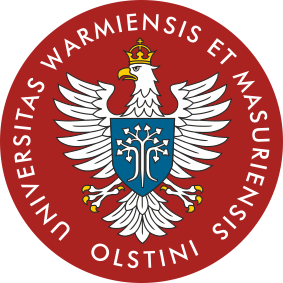Editorial
Space is one of the most capacious and universal so one the most important of intellectual categories. It plays a fundamental role in many fields of science and arts. It is impossible to think about architecture or sculpture without taking into account their spatial element, but in these cases space becomes an element of the work. At the same time, spatial phenomena, becoming a reference for events and values, confirm their importance in every artistic and social activity.
Territoriality, settlement, and establishment were the basis for all civilizations. Linking the emerging communities with the territory providing some sense of security and access to resources, thanks to which people were able to secure their existence as well as the growing and differentiating needs. The original meaning of the word "culture" comes from cultivation, and this became possible when humans acquired the ability to lead a sedentary lifestyle. The technologies differed depending on the geographic conditions, but all were functionally similar. Cultivating the soil, waiting for crops, imposed measures of time and group identity, becoming a decisive moment in the development of human civilizations. On this basis, civilizations and cultural systems were created and developed over the millennia, although most of them were invaded and inevitably subjected to internal changes.
Modern culture was born in the second half of the 18th century with the hope that it would overcome the numerous weaknesses of earlier eras and systems. We most often associate modernization processes with a change for the better, improvement, adaptation, improvement of the situation in the individual and social dimension. Technological changes since the Enlightenment and the Industrial Revolution are constantly accelerating. Indeed, in conjunction with social changes, they enabled the rapid development of many areas of life, including science and art. But economic changes also forced mass migrations, often leading to conflicts and persecution, which in turn resulted in further migrations and a growing sense of alienation and injustice.
In the twentieth century, expulsions and escapes led to misfortunes, the greatest of which, from the point of view of the scale and systemic involvement of many European countries, was the Holocaust. Knowing that the problem of expulsion and internal emigration had grown long before the term became popular in cultural discourse, I would like to encourage you to read the article by Bronislava Volkova, professor of semiotics at Indiana University in Bloomington, Czech poet, author of graphics and collages.
A methodologically different approach to the issue of place is the narratological concept of city culture and its reflection in a film work as a superior semiological structure. In an essay devoted to films by Frunze Dovlatyan and Christian Rivers, Professor Alexander Lusiy examines ideas decoded from urban space as the basic text of culture.
The covers of popular novels for young people bcome the subject of the study by Justyna Szlachta-Ignatowicz. The change that took place in the aesthetics of utility projects in the nineties was an attempt to cope with the emerging book market. Years later, perceived as a text of visual culture, allows for the analysis of the category of change in culture.
The article by Natalia Belchenko is devoted to the musical sources of the work of the outstanding Ukrainian poet Vasyl Stus. At the same time, a selection of poems from 1959-1971 by this poet, translated by Marcin Gaczkowski, was published ("Wesoły cemetery", KEW Publishing House, November 2020). Wasyl Stus was a political prisoner, and his love of music and musical references became part of the metaphorical language he used in his letters to close people. After the poet's death, his works gained a permanent place in the Ukrainian singing tradition, and he himself became the bard of the Ukrainian quest for independence.
In the text devoted to the perspective contained in the texts of the classical Hindu poet and saint Kabir Das, prof. Mamta G. Sagar from Bangalore presents a contemporary look at the stereotypical role of women in traditional Indian culture and attempts by contemporary artists to overcome invisible but still existing mental boundaries.
The Varia section includes two texts devoted to artists working in exile. The first text by prof. Leszek Szaruga, dedicated to the figure of the exile, the eminent sculptor Teodor Bok and his studio, which in the eyes of the observer turns out to be the key to the artist's creative method. The second text is devoted to Tatiana Asmolkova, a Russian dancer and choreographer who has been working in the theater community in Olsztyn for two decades.
The third volume of the Artistic Forum proposes to look at the texts of culture as testimonies and narratives stretched between the idea of being at home and the experience of exile, migration in the real world and turning to the interior. The experience of migration concerns not only the heroes but also some of the authors of the presented texts. It includes not only analyzes of the work of refugees or cultural space related to migration, but also overcoming strangeness and distance as a condition of contemporary humanism.
Krzysztof Szatrawski

